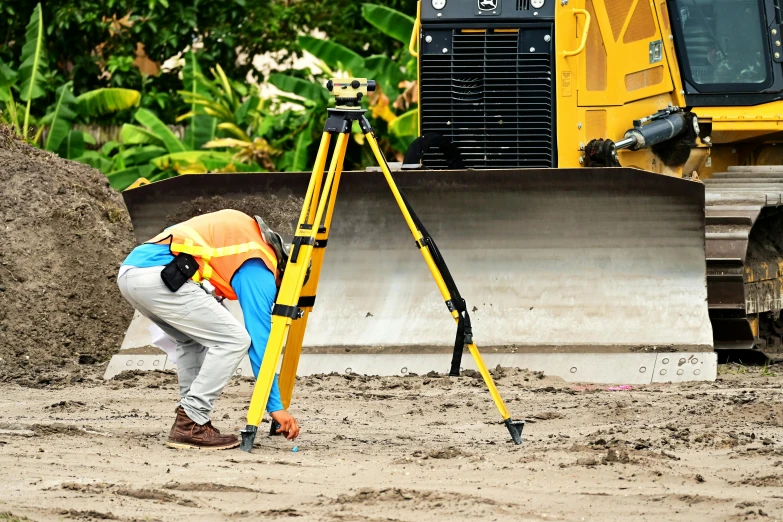1. Introduction
In my engineering career, sloped excavation has been a critical topic. This excavation method not only enhances construction safety but also improves overall project efficiency. In this article, I will share seven key points to help you better understand and master this technique.
2. Understanding Sloped Excavation
First, let me define sloped excavation. It refers to a digging process where the edges are not vertical but inclined at a certain slope. This design is not only aesthetically pleasing but also effectively reduces the risk of soil collapse. The advantages of sloped excavation lie in its better pressure distribution, allowing the soil and materials to remain stable and minimizing potential hazards.
Compared to traditional vertical excavation, sloped excavation provides higher safety in various environments. For many construction projects, this method not only improves the soil’s load-bearing capacity but also reduces the impact on the surrounding environment.

3. Assessing Soil Conditions
Before performing sloped excavation, assessing soil conditions is crucial. First, I gather basic information about the site, including the type, structure, and moisture content of the soil. This information can often be obtained through on-site observations and historical data.
Soil Type Identification
The type of soil is a key factor influencing excavation stability. I conduct the following tests:
- Particle Size Analysis: Using sieve analysis and sedimentation methods to understand the soil’s particle size distribution.
- Moisture Content Testing: By sampling and drying in an oven, I determine the soil’s moisture content to evaluate its impact on load-bearing capacity.
- Plasticity and Friction Angle Testing: Laboratory tests to determine the soil’s plasticity and friction angle, which are critical for slope design.
Stability Assessment
While evaluating soil conditions, I focus on the following points:
- Soil Bearing Capacity: Using Standard Penetration Tests (SPT) or static load tests to assess soil stability under construction loads.
- Groundwater Level: Understanding how groundwater levels affect soil stability, especially during rainy seasons when saturation can decrease load-bearing capacity.
- Soil History: Reviewing historical data to see if the area has experienced soil collapses or landslides.

4. Choosing the Right Slope Angle
Choosing the appropriate slope angle is critical for ensuring construction safety. The slope angle directly impacts soil stability and construction feasibility. Generally, I recommend a slope angle range of 30 to 45 degrees.
Criteria for Slope Angle Selection
- Soil Type: Different soil types have varying requirements for slope angles. For instance, clay has a lower friction angle and may require a gentler slope, while sandy soils can tolerate steeper slopes.
- Environmental Factors: Factors such as rainfall, wind, and earthquakes can affect slope stability. In rainy areas, I tend to favor a gentler slope to mitigate collapse risks from saturated soil.
- Equipment Capabilities: When selecting slope angles, I also consider the capabilities of the equipment being used. Some excavators may have safety and stability limitations on steeper slopes.
Practical Application of Slope Design
In practical applications, I usually draft slope design plans that indicate the recommended slope angles and adjust them based on site conditions. The design plans serve not only as guidance for construction but also help the team understand the operational requirements.

5. Equipment Selection and Configuration
Choosing the right equipment is a vital component of successful construction. The correct equipment can enhance efficiency and ensure quality.
Excavator Selection
I typically opt for well-known brands like CAT or Komatsu due to their performance and stability. When selecting specific models, I consider the following factors:
- Excavation Depth and Range: Choosing excavators that meet the project’s specific excavation depth and working range requirements.
- Working Environment: Considering the environmental conditions of the construction site, such as soil type, terrain, and space constraints, to select appropriate equipment.
Auxiliary Equipment Configuration
In addition to excavators, I prepare auxiliary equipment to ensure smooth construction:
- Bulldozers: For leveling the ground and clearing the construction site.
- Transport Trucks: For hauling excavated soil and materials to ensure a smooth flow of materials on-site.
- Support Systems: When necessary, I use soil support systems like steel braces or concrete walls to enhance slope stability.
Equipment Maintenance and Safety Checks
Before construction, I conduct thorough safety checks on all equipment, including:
- Hydraulic Systems: Ensuring adequate hydraulic fluid levels and checking for leaks.
- Braking Systems: Verifying that brakes are responsive to ensure safety while operating on slopes.
- Operator Training: Ensuring all operators are professionally trained and familiar with equipment operation and safety protocols.
6. Safety Measures and Monitoring
Safety is always my top priority. Before construction begins, I perform a comprehensive safety inspection to ensure all equipment is in good condition.
7. Addressing Challenges and Problem Solving
During construction, I often encounter challenges such as soil collapses or weather changes. To ensure ongoing safety and continuity, I typically develop contingency plans in advance. These plans include adjusting the construction schedule, reinforcing soil support, and stopping work during extreme weather conditions.
8. Conclusion
Through these seven key points, I hope to help you better understand and apply sloped excavation. This technique is significant in enhancing construction safety and efficiency. I encourage you to apply these skills in your practical work to enhance your professional capabilities.
If you have any questions or would like to discuss further, feel free to contact me! Through continuous practice, we can all become better professionals.

